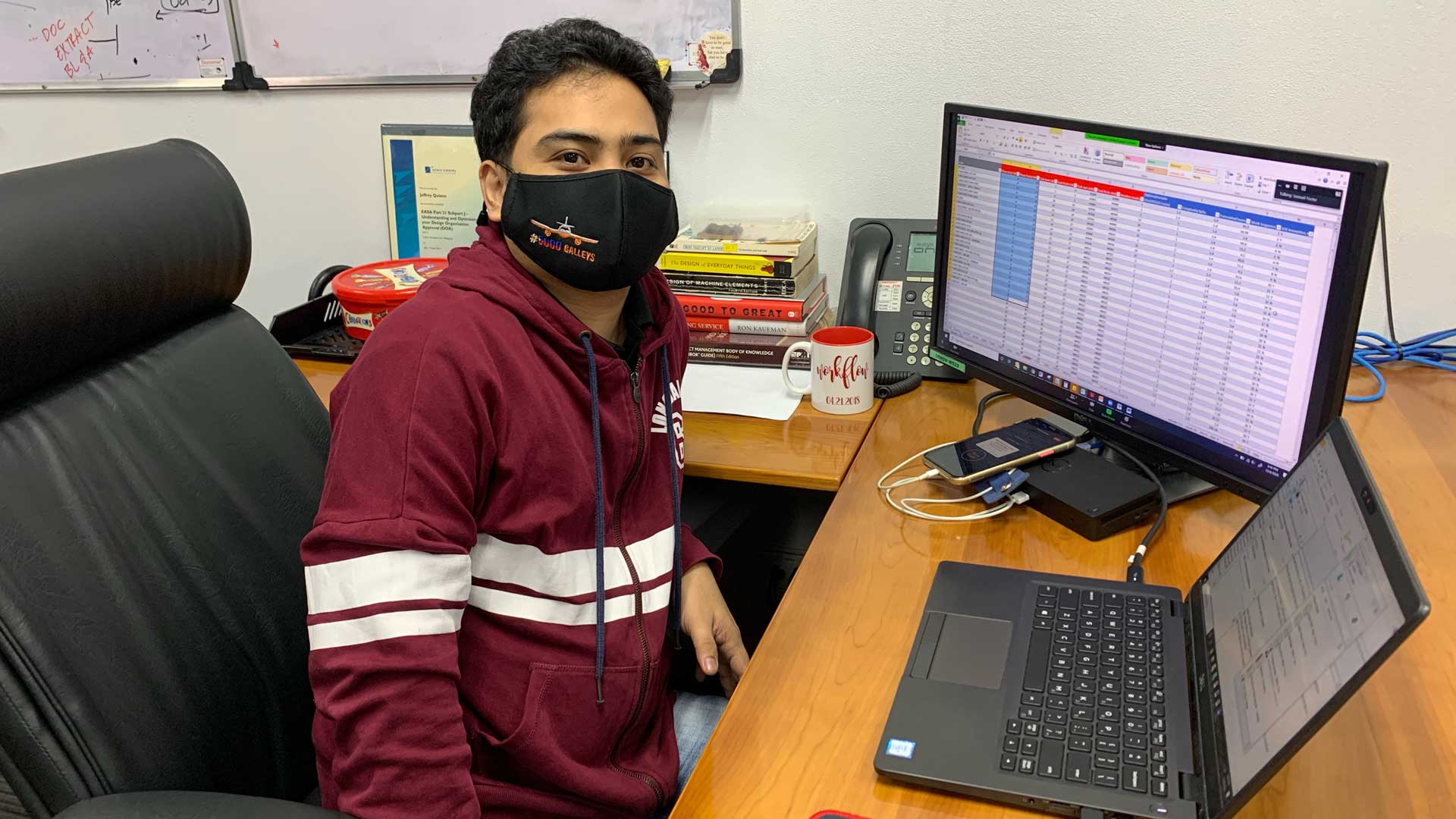Redefining resilience 5000 galleys at a time
If we didn’t know what resilience meant before this year, 2020 has certainly been an effective educator. But here’s a word you might not know, though it’s in no short supply at Collins: prosilience. A bit like resilience 2.0, prosilience is all about the improvements that come about from having to work through unexpected challenges. Lemonade from life’s lemons.
There may be no group that embodies this idea quite like our Interiors team in the Philippines. The team recently delivered its 5,000th galley installation, an impressive milestone worth celebrating any time, but especially when measured against the many challenges they’ve faced in their eight-year history. But to fully appreciate where they are, it helps to know how far they’ve come.
The Tanauan, Batangas, Philippines site began operations in early 2012, after being awarded the galley program for A350 aircraft out of Collins’ Leighton Buzzard facility in the United Kingdom.
We needed more space, engineers and overall expertise to make the program a success,” said Mat Baxter, the Philippines site general manager. “There were a lot of moving pieces we were juggling to make the program a success.”
Galleys, where food is prepared, refrigerated and heated, are an important part of any commercial aircraft. They’re also highly customizable and modular, meaning their assembly calls for a range of specialized skills, from design and electrical engineering to stress and weight analysis.
Those skills were plentiful among the workforce in the Philippines - one of the reasons Collins selected the site.
All new programs experience growing pains. Projects of this size and scope magnify those challenges – even with a talented workforce. Sites across the globe provided the help needed to make the project a success.
“The Leighton Buzzard site in particular was instrumental in collaboration,” said Bridget Sheriff, Interiors vice president of Engineering and Technology. “The commitment from colleagues around the globe helped us accelerate the learning and development necessary for this program’s success.”
If the learning curve wasn’t steep enough, the A350 galley program was won largely based on giving the customer near complete customizable control – practically unheard of in the aerospace business.
“Some have had seven configurations on the same aircraft,” explained James Walton, associate director of engineering. “Galleys are arguably the most complex thing in the cabin interiors. Everything you change alters the center of gravity, making it a complete redesign with each new customization.”
Let’s pause a moment to put this all into perspective: a workforce with collectively little aerospace engineering experience was asked to come together in a new facility, with new leadership and deliver on an incredibly complex design for what was pegged a ‘monumental program’ for the company.
No pressure, team.
“Those early days were tough. Even the simple tasks seemed difficult,” said Mat.
But the team stuck with it. What started as simple task-based engineering, swiftly expanded to design drawings and process refinement. By 2017, the Philippines engineering team was supporting the design of complex galleys and had designed their first Head of Version (HoV) shipset (the first configured and manufactured aircraft of the order) to support customer delivery.
“That’s when we began to fully understand the possibilities that existed with this group,” said Mat. “The team has such a strong desire to learn. As leadership continued to place trust in them, they continued to exceed expectations.”
As site capabilities matured, further certifications, awards and signatories followed. As did their industry reputation and relationships with customers.
“There have been tremendous improvements in how we build the galleys from when I started in 2012,” said Engineering Manager, Jeffrey Quiaño. “I have seen how our engineering capabilities have grown over the years and are still growing now. That is what makes me proud.”
“Looking back, it’s astounding we’ve gotten this far,” said Mat. “We’re not talking about a few employees or leadership, it’s everyone.”
When new challenges arise, the team meets them head-on with creative solutions.
The site delivered a cache of critical PPE to their pandemic-stricken communities while hundreds of thousands were still displaced from the recent Taal volcano eruption. All the while, the team was still receiving high scores and meeting customer commitments at a staggering rate.
The Philippines has been hit by seven large-scale natural disasters in 2020 alone - four typhoons, one volcano eruption, one large earthquake and a global pandemic.
And yet, the team keeps coming back -- smarter, more determined and stronger than ever.
“Whether it’s volcanoes, the pandemic or typhoons – the people here take care of each other,” said Mat. “That altruistic spirit and the determination to overcome challenges extends to the workplace.”
Kristine Macauba, a design assurance coordinator, was born and raised in Santo Tomas in the Philippines and said Filipinos “are some of the most resilient workers in the world.”
“We are always finding a silver lining in our day-to-day lives. This affects productivity, work quality and the entire office environment in a positive way.”
Our teammates in the Philippines have likely dealt with more natural disasters this calendar year than most will in their lifetime. And they haven’t just recovered – they’ve rebuilt communities, time and again, delivered on milestones for our customers and inspired us all along the way.
That’s the very definition of prosilience.






